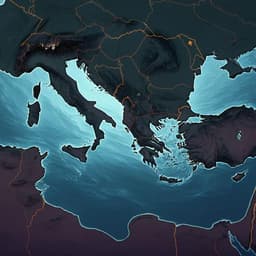
Earth Sciences
Prehistoric human migration between Sundaland and South Asia was driven by sea-level rise
H. L. Kim, T. Li, et al.
Discover how rapid sea-level rise from the Last Glacial Maximum to the mid-Holocene reshaped Southeast Asia's coastal landscape and influenced human migration. This groundbreaking study merges paleogeographic mapping and genomic analysis, revealing the impact of environmental changes on population dynamics. Conducted by a team of researchers including Hie Lim Kim, Tanghua Li, and Benjamin P. Horton, it uncovers the earliest recorded forced migration due to sea-level rise.
~3 min • Beginner • English
Related Publications
Explore these studies to deepen your understanding of the subject.







